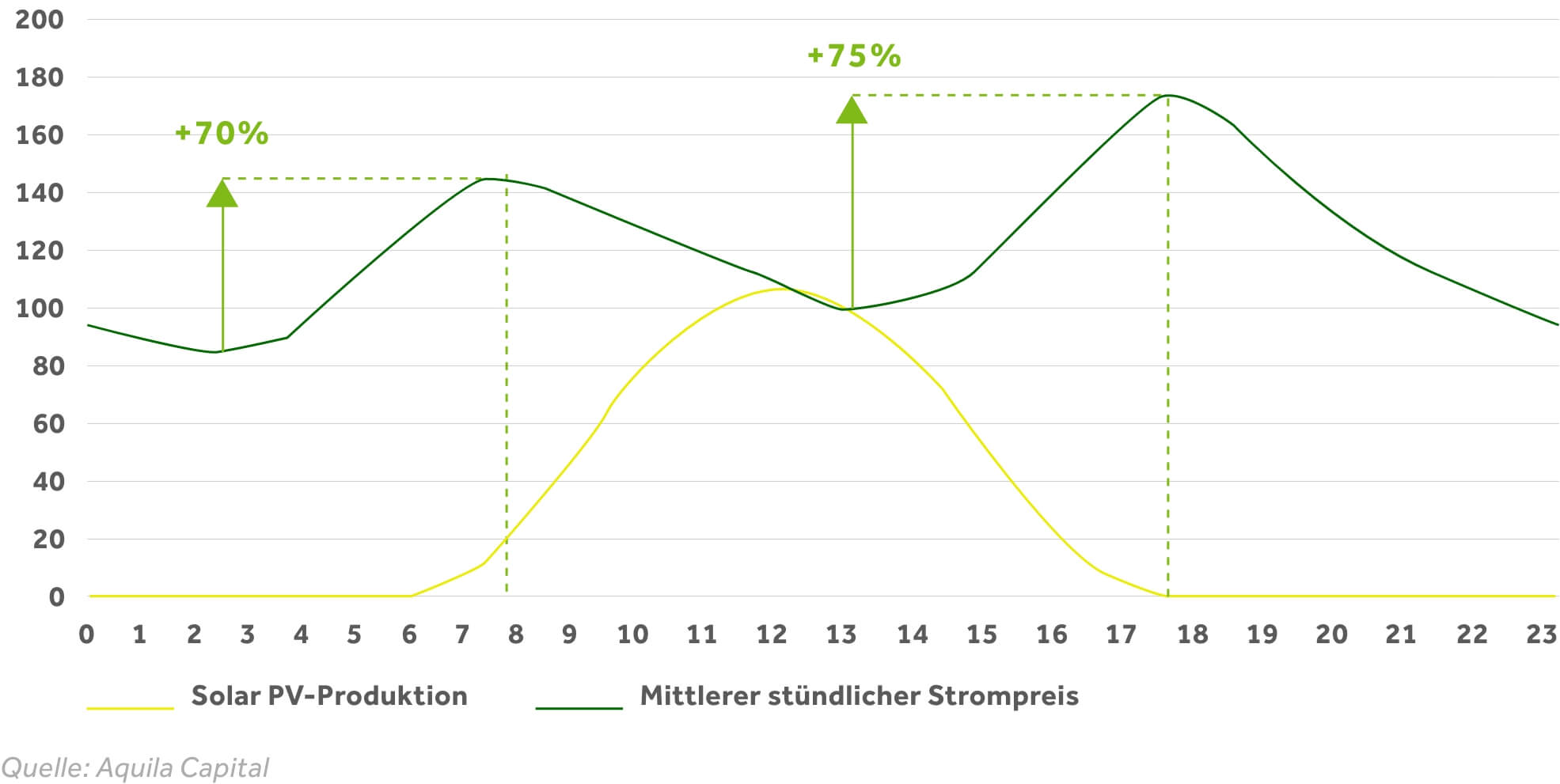GESI GIGA Batteries
WE MAKE GREEN ELECTRICITY AVAILABLE WHEN THE SUN IS NOT SHINING AND THE WIND IS NOT BLOWING
GESI Giga Batteries - our drive
We make green energy available 24/7 - even when it's flat and raining
We stabilize the grid, reduce blackout risks and save up to 500,000 tons of CO2 per year with 10 locations
We use lithium iron phosphate (LFP) batteries, which are non-toxic and harmless technologies that we integrate into a recycling concept
WE make GREEN ENERGY available around the clock
The economy and society need green electricity, even when the sun is not shining and the wind is not blowing.
With our battery storage systems, we are making an important contribution to the energy transition by:
- stabilize power generation from solar and wind and thus the power grid
- avoid switching off or throttling renewable energies and thus ensure increasing green electricity quotas
- lower electricity prices, reduce gas consumption and cut CO2 emissions
THE CHALLENGES AND OPPORTUNITIES OF THE ENERGY TRANSITION ARE ENORMOUS
The energy transition and the massive expansion of renewable energies required for it are increasing the instability of the electricity grid and the risk of overloads.
This leads to considerable energy losses, which drive up the price of electricity. To counter this, Germany needs enormous storage capacities.
We already have more than 100 gigawatts of excess solar and wind capacity in the 4 to 5 hours of midday, which is lost without storage.
large battery storage tanks (BESS) ARE AN IMPORTANT PART OF THE SOLUTION
When a lot of energy is produced, our batteries store electricity and release it back into the grid when needed.
Thanks to connected loads in the gigawatt range, GESI Giga Batteries can supply power for several hours. In this way, they are making a significant contribution to the success of the energy transition.
Hydrogen is also a storage medium, but it is much less efficient in terms of production and shows its strengths in long-term storage.
Battery storage serves daily & short-term needs – and ensures that more green hydrogen is available where it is really needed.
LOCATIONS
Large battery storage projects cannot be realized without the necessary infrastructure.
We therefore prefer to build on decommissioned coal and nuclear power plant sites, as grid connections and transformer stations are available here.
In this way, we are also offering a sensible use of these areas for the energy transition.
A study by the Fraunhofer Institute shows that battery storage makes sense at these locations.
THE ADVANTAGES
Large-scale battery storage systems (BESS) make a significant contribution to CO2 savings. They offer high flexibility and efficiency and reduce the need for fossil-fuel peak-load power plants and gas imports.
Thanks to the more efficient use of green electricity, they have a dampening effect on electricity prices and reduce the need for additional renewable energy capacities.
GESI Giga Batteries - A POWERFUL partner
GESI is a solution partner for energy suppliers and institutional investors. We develop, plan, build and finance efficient and digitized large-scale battery storage systems.
GESI supports business partners comprehensively and in all phases of the construction, operation and maintenance of large battery storage systems/ BESS.
GESI brings technical expertise in the installation of modern storage technology and a broad network of institutional investors.
GESI supports the marketing of flexible storage capacity and offers individual options for revenue distribution.
FAQ: FREQUENTLY ASKED QUESTIONS
GESI intends to use only LFP cells and to open up to new technologies in the future. We explicitly do not use NMC or cobalt-reduced NMC/NCA cathode materials: Lithium, iron and phosphate are natural minerals. No heavy metals or conflict raw materials are required in production. The VDE also classifies LFP as “non-toxic and harmless”.
Important trade tax revenue remains, jobs are preserved and created.
Independence from imports, in southern federal states: electricity price zone hedge, welfare gains due to low electricity costs.
We load when there is the most (too much) supply on the market. This means that we automatically work in line with the grid.
 Source: Aquila Capital
Source: Aquila Capital
The energy balance of a Li-ion cell is largely dependent on the electricity mix in the country where the battery cell is produced, as a lot of energy is required for coating and drying in particular Greenhouse gas emissions due to the energy required in production are between 61 and 106 kg Co2äg/kWh battery capacity. (realistic to worst-case comparison: BMW with 100% green electricity in the supply chain for battery cells) See:
https://www.agora-verkehrswende.de/fileadmin/Projekte/2021/Klimaneutrale-Batterieproduktion/59 climate-neutralbatteryproduction.pdf
Emissions from natural gas-fired peak-load power plants: 433 grams CO2/kWhel See:
https://www.umweltbundesamt.de/publikationen/emissionsbilanz-erneuerbarer-energietraeger-2018
141kWhel to 245kWhel + 10% losses = 155.1 to 269.5kWh of renewable energy must be saved per kWh of battery capacity in order to be better than a current gas-fired power plant in terms of energy balance
With around 365 cycles per year, it can be assumed that the battery will have a neutral or better energy balance than comparable flexibility options after just 5 – 9 months
In fact, Australia and America are pioneers in the field of climate-neutral peak-load power plants.
https://www.energy-storage.news/queensland-peaker-plant-proposal-adds-batteries-reduces-planned-gas-turbine-capacity/
&
https://www.cleanenergycouncil.org.au/resources/resources-hub/battery-storage-the-new-clean-peaker
Modern systems are now subject to strict regulations, have several safety levels and cannot be compared with standard Li-ion batteries.
